AI at Work
SEO vs. AEO vs. GEO: How Content Strategy Is Evolving in 2025

Ashwini Pai · Senior Copywriter
September 19th, 2025 · 24 min read

With AI changing how people search, traditional SEO is no longer enough. Answer engine optimization (AEO) and generative engine optimization (GEO) are now complementary strategies. Together, SEO, AEO, and GEO aim to make brands show up no matter where search happens. Even as we continue discovering new information in an evolving search landscape, what we already know can help us get more strategic and act on opportunities faster.
So, without further ado, let’s look at each strategy.
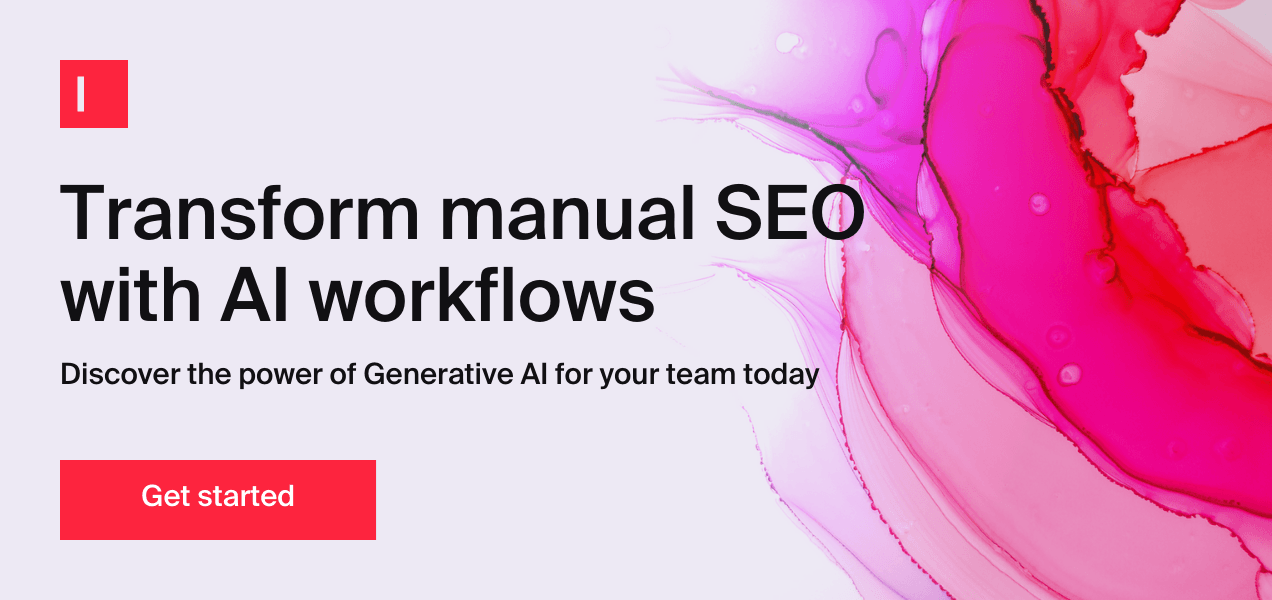
What is SEO?
Search engine optimization is a strategy to improve your website’s ranking on search engine results pages (SERPs) for queries related to your product or expertise.
Most users never scroll past the first or second page because they want information quickly and expect the best results to be on the first page. The likelihood of a top position increases when you satisfy Google’s (known) ranking factors, which include sharing relevant, valuable content that builds trust with people and fulfills digital marketing's core purpose.
What are the core SEO tactics?
Core SEO tactics focus on making your site understandable by two types of users: search engines and your audience. They include a set of content, technical, and off-page optimizations that together improve visibility and user experience.
Content strategy
Keyword research and search intent alignment
Create unique, high-quality content
Demonstrate E-E-A-T (Experience, Expertise, Authoritativeness, Trustworthiness)
Technical optimization
Submit sitemap to Google Search Console
Optimize site architecture
Optimize site for mobile
Improve Core Web Vitals (page load time, interactivity, and visual stability)
Off-page optimization
Internal linking
Earn inbound links from high domain authority (DA) sites
Create linkable assets (guides, tools, research) to attract natural links
Amplify content on social media for greater reach
Secure brand mentions in editorial media (digital PR)
What SEO looks like in 2025
SEO has always evolved alongside search engines — from simple keyword matching, to contextual and conceptual understanding, and now to delivering direct answers through AI Overviews and conversational assistants like Copilot and Gemini. As content creation scales to compete for visibility, maintaining the quality and authority that both search engines and AI systems prioritize has become even more critical. Here’s what that means for SEO:
1. Content creation uses both AI and human expertise
AI content is everywhere, but human expertise remains the differentiator. The insights from your product managers, customer success teams, and leadership carry authority because they’re based on real-world experience. Documenting that knowledge gives AI a foundation to create content that’s both accurate and unique, just as Typeface users do.
How it works with Typeface
Our Web Agent turns your proprietary knowledge into SEO-ready blogs by weaving in relevant keywords, competitor insights, and People Also Ask (PAA) questions. You can publish more posts each week, repurpose blogs into LinkedIn posts or newsletters, and refine content easily with intuitive AI workflows.
2. Relationship-building matters even for the biggest brands
Even household names can’t rely on brand recognition alone. The opinions of followers and influential voices on social media, industry blogs, and online forums shape how people perceive brands, products, and innovations. Today, consumers actively seek information from diverse sources: in 2025, the average person uses over six different social media sites. Engaging with an educated and aware audience can earn your brand greater trust and authority.
Common tactics
Do a SERP analysis to identify the authority sources you can partner with, such as an influential guide that recommends products and services.
Co-author research and join podcasts to get before a larger audience and build link equity.
Present expert insights and proprietary research in interviews to industry publications and in conference panels and LinkedIn Live events. Share clips and summaries across your marketing channels.
3. E-E-A-T remains crucial
With AI-generated content everywhere in 2025, clear signals of authenticity and expertise are what set trusted brands apart. Search engines are getting better at identifying information that truly helps people, making it more important than ever to publish quality content backed by strong trust indicators.
Common tactics
Create or update author bio pages with credentials, expertise, and experience, including links to LinkedIn profiles and published work.
Add “last updated” dates to evergreen content and set reminders to refresh content.
Include citations to authoritative primary sources in a consistent style.
Add expert quotes from recognized experts in your field.
What is AEO?
Answer Engine Optimization (AEO) is a content strategy to increase visibility in search features that provide direct answers, like Google’s AI Overviews, Featured Snippets and PAA boxes, and in voice responses from Alexa, Siri, and Google Assistant.
While Featured Snippets and PAA boxes were introduced to improve the search experience (and have been around for a decade), AI Overviews were launched in response to the growing popularity of generative search tools like ChatGPT and Perplexity. As people have come to expect immediate answers, AEO is now a specialized strategy within SEO.
Let’s see how to optimize for AEO features.
Featured snippets
What is a featured snippet?
A featured snippet is the answer box that appears right at the top of search results (a.k.a. position zero). It’s a concise answer to the user query with a clickable link that takes you to the section of the webpage where the answer appears. Google introduced featured snippets to help people more easily find what they’re looking for.
These are the main types of featured snippets:
Paragraph snippet, a two-sentence answer, typically for “what is” and other definition-type queries
List snippet, which can either be a bulleted list of items or numbered, step-by-step instructions
Table snippet, for queries requiring comparative or structured data presentation, such as comparison tables, specifications, pricing tiers, or feature lists
Video snippets, which are short video previews directly in search results, typically showing a thumbnail, title, description, and duration.
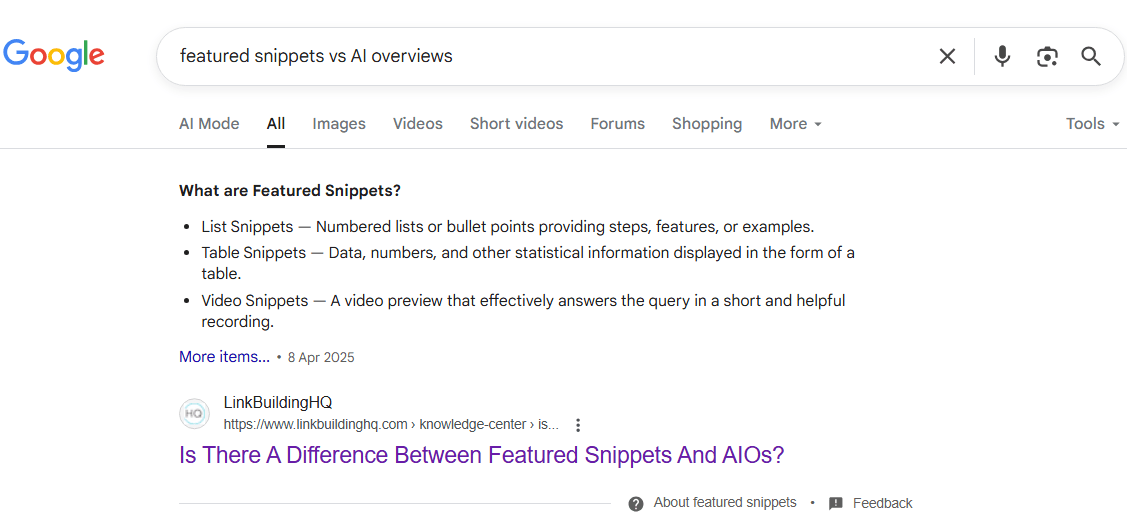
Why optimize for featured snippets?
You’re hard to miss at position zero, but you’ll need to consider two scenarios. If users get answers directly from your featured snippet, they may not click through. But two lines of text don’t satisfy every query or search intent. Placement in featured snippets increases visibility and the potential for more clicks, creating greater opportunities for conversions.
Also worth noting:
Featured snippets often come from one of the top-ranking pages for a given query. Getting or maintaining strong organic rankings improves snippet selection odds.
The visibility of feature snippets can be affected by Google’s algorithm updates and AI overviews. Track how your featured snippets are performing to do what’s needed quickly.
How to optimize for featured snippets
1. Find featured snippets opportunities
Several keyword research tools, including Semrush and Ahrefs, show keywords that trigger featured snippets. Do a Google search to analyze what format Google uses for each query type and identify topics that naturally fit those formats.
Steps
In your keyword research tool:
Search for a keyword (e.g. “cybersecurity”)
Apply filters to narrow down to featured snippets
Focus on long-tail variations
Say results show:
- What are cybersecurity best practices? (list format)
- How to prevent cyber attacks? (step-by-step format)
- What is multifactor authentication? (paragraph format)
- Cybersecurity risks for businesses (list format)
Click through each keyword to see what the featured snippets are showing in Google search results.
For example: “What are cybersecurity best practices?” shows a numbered list (1. Use strong passwords, 2. Enable 2FA, etc.)
Reverse engineer content opportunities based on the patterns you find.
12 Cyber Security Best Practices for Organizations in 2025 (list)
How to Conduct a Security Audit (step-by-step)
Structure content in the format Google rewards:
Numbered lists when you see numbered snippets
H3/H3 headers that mirror the question
Frontload answer in the first paragraph
Follow with the formatted list or steps
2. Place questions in subheadings
Organizing content in a Q&A format helps Google extract direct responses and readers quickly find what they want.
Try to place “what,” “why,” and “how” questions in H2s and H3s or label sections that mirror these types of queries. Naturally, the questions must flow logically, moving from what to why to how.
Example:
What are solar panels?
Why use solar panels? / Are solar panels worth it? / The long-term benefits of going solar
How much can solar panels save you? / The falling costs of solar energy
You can also frame a few topic titles as questions to give Google and people clear indication about what's covered on the page.
3. Answer the questions straight away
Google's algorithms can identify relevant answers anywhere on a page, but they favor easily extractable content. By answering questions upfront, you give them the most straightforward path to extraction and boost your snippet selection odds.
Just as important, the answer should align with the searcher's intent. For example, when a small business asks “Which CRM should I choose?” the real question is often “Which one won’t waste my time or money?” The intent-matching answer addresses practical concerns, like ease of set-up, use cases, and simplicity rather than feature lists. Such content that addresses users’ underlying goals becomes a strong contender for AEO (and GEO) inclusions.
4. Include FAQ sections
As FAQs provide clear, focused answers to user queries, they’re a tactical format for featured snippets. Creating a question-and-answer section or organizing your content in this format can help with featured snippet citations.
5. Structure content for easy comprehension
Google pulls relevant headings or sections of an article to create a snippet. Organizing your content into H2 and H3 headings, bullet points (for lists), numbered lists (for processes), and tables (for comparisons) makes it easier for Google to extract the information.
6. Include images where relevant
Featured snippets can include relevant images from articles to make answers clearer. Using supporting images with alt text can help Google understand your content better while making your featured snippets more visually attractive.
Pro tip: Save time on overall image creation with Typeface. Create new visuals using simple AI image prompts or repurpose your existing visual assets into lifestyle, studio, or outdoor variations.
7. Avoid mentioning your brand name in featured snippet text
Google prefers providing authoritative, unbiased answers relevant to a broad audience. Including your brand name in featured snippet text goes against this practice. Unless it's essential to mention your brand name to answer correctly, leave it out.
PAA boxes
What are PAA boxes?
People Also Ask boxes are the expandable question boxes that show the related questions to a particular user query, along with source links. They can appear as short paragraphs, bulleted lists, tables, or even images, video, or mixed formats. Google created PAA boxes to help reduce the average number of searches to complete a task by prompting more related queries from the start.
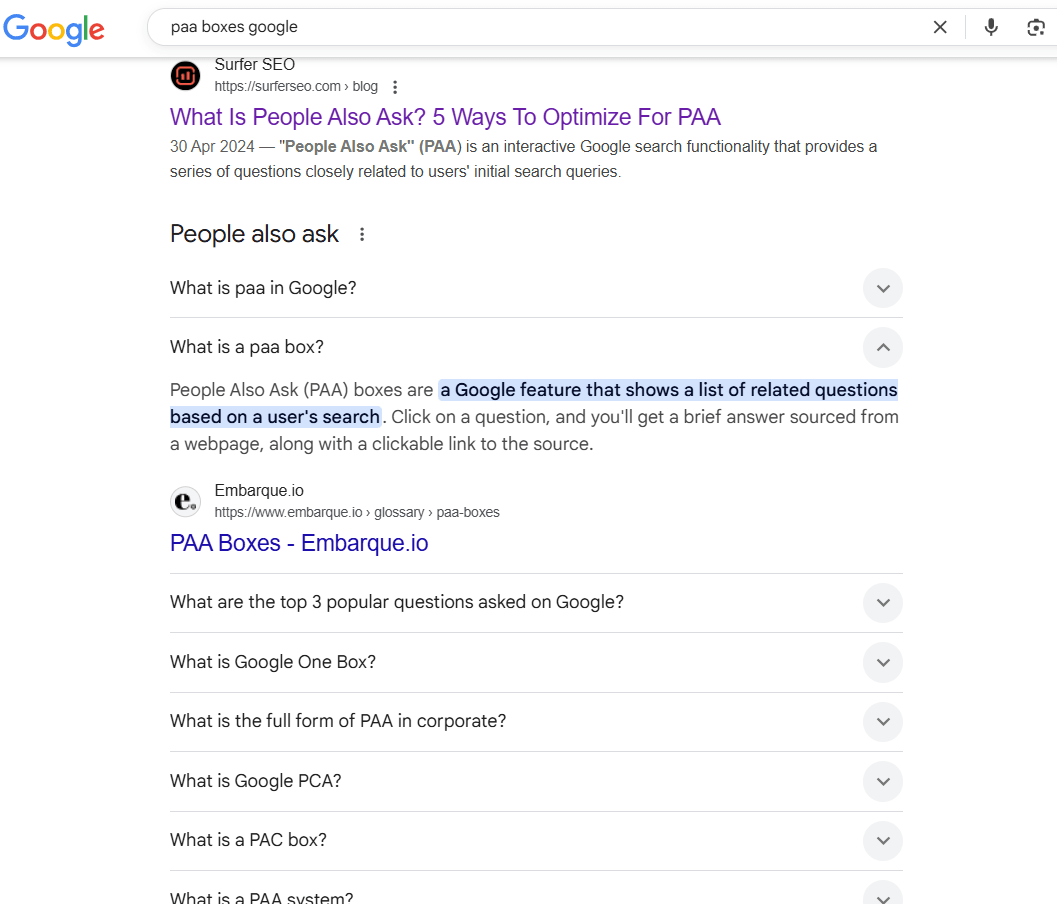
Why optimize for PAA questions?
PAA questions uncover what users are asking about a subject, product, or service, revealing their needs, objections, or interests. You can use this information to create content that directly addresses their concerns and resonates.
From an AEO perspective, PAAs create multiple entry points to capture organic traffic:
Like featured snippets, traffic from PAA questions tends to be high-intent because users are actively researching or deciding on solutions.
Google can select multiple answers from a single webpage in a single session
As PAAs often appear across multiple searches, ranking for one can boost visibility for related searches
How to optimize for PAA boxes?
Find the right questions
Use Google Search, keyword research tools, AnswerThePublic, and AlsoAsked to find question-style searches and existing PAA boxes. Note how the questions evolve at different stages of your audience’s journey and include them in your content funnel strategy.
Answer multiple related questions
When users click on PAA boxes, they reveal additional related queries that you can include in your blog content. Add them to a fresh blog you’re creating, within heading, FAQs, or body text to make it more comprehensive and create more chances for PAA placements.
Improve on competitors’ PAA answers
You can always optimize what’s already ranking to attract PAA placements. Review the PAA answers appearing for your target keywords and see if you can improve the content, like fill information gaps, improve clarity or structure, write in a more conversational tone, and more.
Refresh PAA questions
Google regularly updates PAA questions to keep them relevant to current user interests. So, previously ranking PAA questions may lose visibility over time. You can maintain your presence or gain new spots by continuing to optimize existing content and create fresh content.
Pro-tip: Typeface’s AI blog workflow includes a PAA optimization feature. The AI surfaces PAA questions that you can review and add to the blog outline.
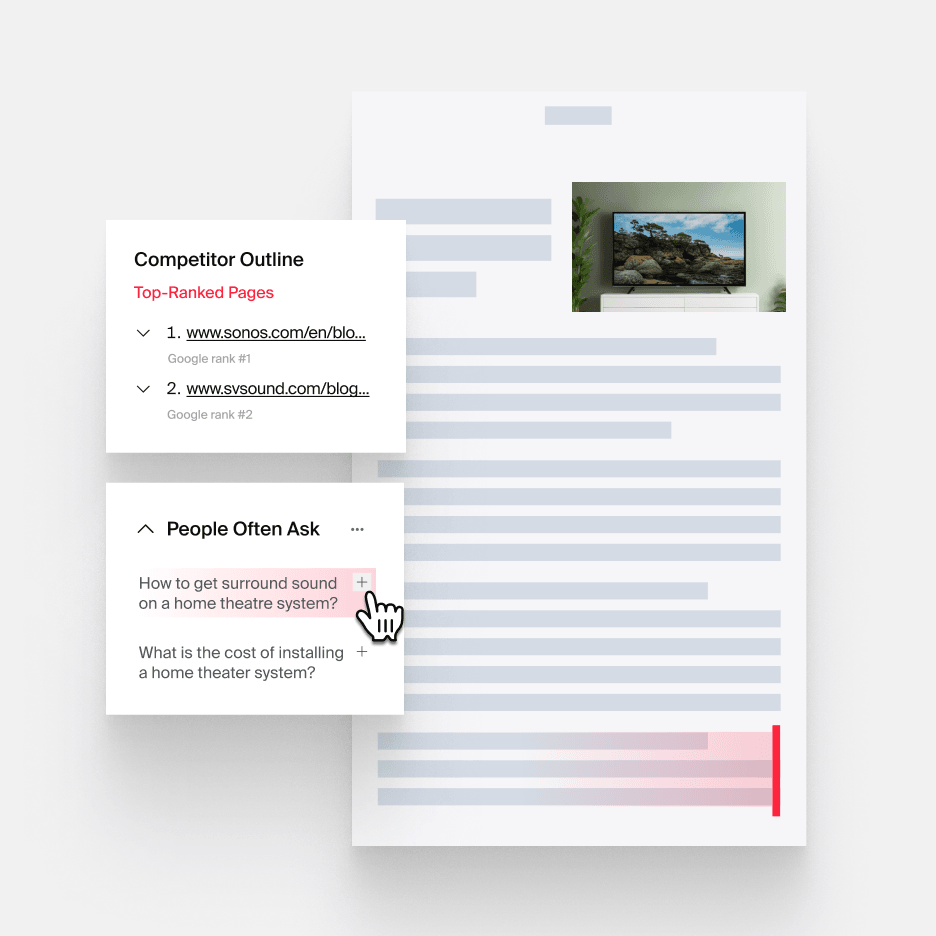
What are AI Overviews?
AI Overviews (AIOs) are answer summaries synthesized from different web sources, using Google's generative AI (powered by models like Gemini). They include links to referenced web pages, which appear as link icons next to statements or as link cards to the right. AI Overviews for trivia or common knowledge may not appear with a source.
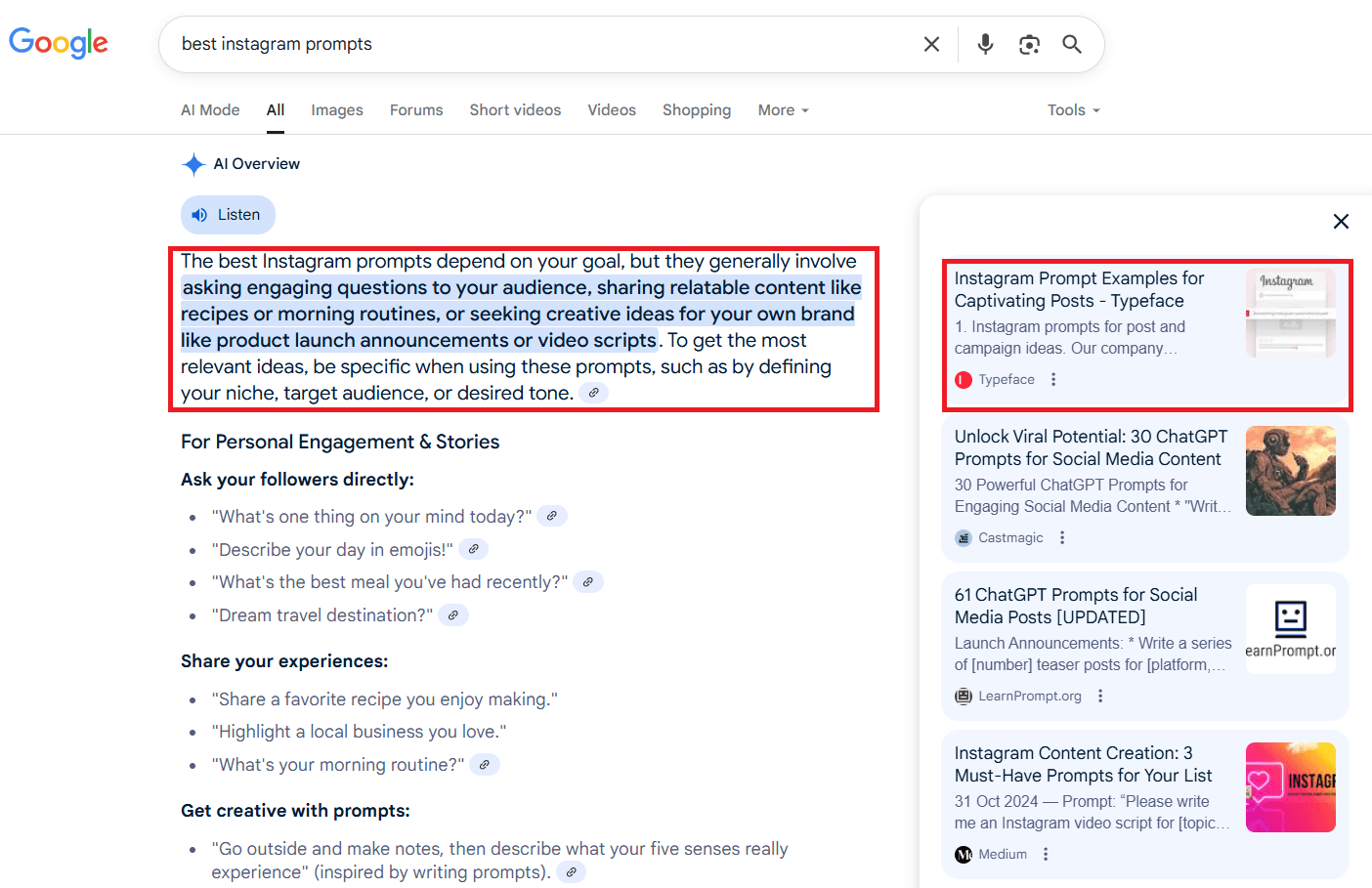
Why optimize for AI Overviews?
Like Featured Snippets, AI Overviews appear at the top of Google search results and cite multiple websites to explore topics. Users can get their fill of information directly from the SERP or click through for more information. The coveted position can attract a large share of clicks due to its prominent place and the perceived authority that comes with it.
As of this writing, the frequency of AIOs has increased significantly, with one study showing a 116% rise since March 2025. The AI-powered search environment is now established and will likely continue evolving. Reviewing relevant studies on how AIOs affect traffic and conversions can offer insights into planning your content strategy.
For example, a team of researchers studying the impact of AI Overviews on web traffic found that:
Webpages included in AIOs generally receive more traffic compared to those excluded on AIOs or on SERPs without AIOs.
For informational queries, AIO placements divert traffic from top-ranked webpages but increase traffic for lower-ranked ones.
For transactional queries, inclusion in AI Overviews increases traffic across all ranking positions compared to being excluded or having no presence.
How to optimize for AI Overviews?
High-ranking pages have a better chance of getting cited in AI Overviews, so good traditional SEO gets you most of the way there. But AI crawlers also look for content that fits the answer style, making factors other than authority count as well. Considering these essential points, here’s a rundown of optimization tactics for AI overviews:
1. Share great content (of course!)
There’s no substitute for unique, trustworthy content that doesn’t sound like most of the internet. For example, original research and expert interviews show deep knowledge of your subject. Internal data like customer case studies show experience and authority. It’s those well-researched and detailed blogs and articles that are likely to continue generating strong SEO and AEO returns.
2. Optimize for query fan-out
Query fan-out is a process in which AI search engines break a single query down into multiple, related sub-queries and combine responses from each to provide a more comprehensive and contextual response.
For example, a query like ‘best CRM for small business’ might fan out into sub-questions like ‘ease of setup,’ ‘pricing tiers,’ and ‘integration options.’ If your content covers these angles, it’s more likely to be cited.
Tactics to optimize for query fan-out:
Anticipate what users expect when searching for a main topic.
Cover different angles that add context and practical value.
Build pillar pages and topic clusters (with internal linking) to signal authority and encourage deeper exploration of your site.
3. Create structured content
Making content parseable, which is an SEO best practice, also helps with AI crawling and summarizing:
Use logical hierarchy
Define concepts and answer questions upfront
Use clear headings, bullet points, and numbered lists
Include FAQs and how-tos
Use Article Schema to help web crawlers understand your content accurately
Voice search
Another growing surface worth optimizing for is voice search. One in five people use voice search weekly. Voice assistants like Alexa, Siri, and Google Assistant can drive additional traffic, especially for informational and local business queries.
How to optimize for voice search?
As users ask complete questions when speaking to devices, question-based content optimization is a natural fit for voice search. Include question-based headings and answer them concisely using a conversational tone.
You can add FAQ sections to target long-tail queries and use many of the same tactics as Featured Snippet optimization, since voice assistants often source their responses directly from Google's Featured Snippets. (If you're optimizing for Featured Snippets, you're also effectively optimizing for voice search.)
What is GEO?
Generative engine optimization is a strategy to get your content cited or brand mentioned in generative search engines like Perplexity and conversational assistants like ChatGPT and Copilot. It’s a newer brand of optimization that reflects a shift in search behaviors towards AI-powered platforms, which do the initial research for users.
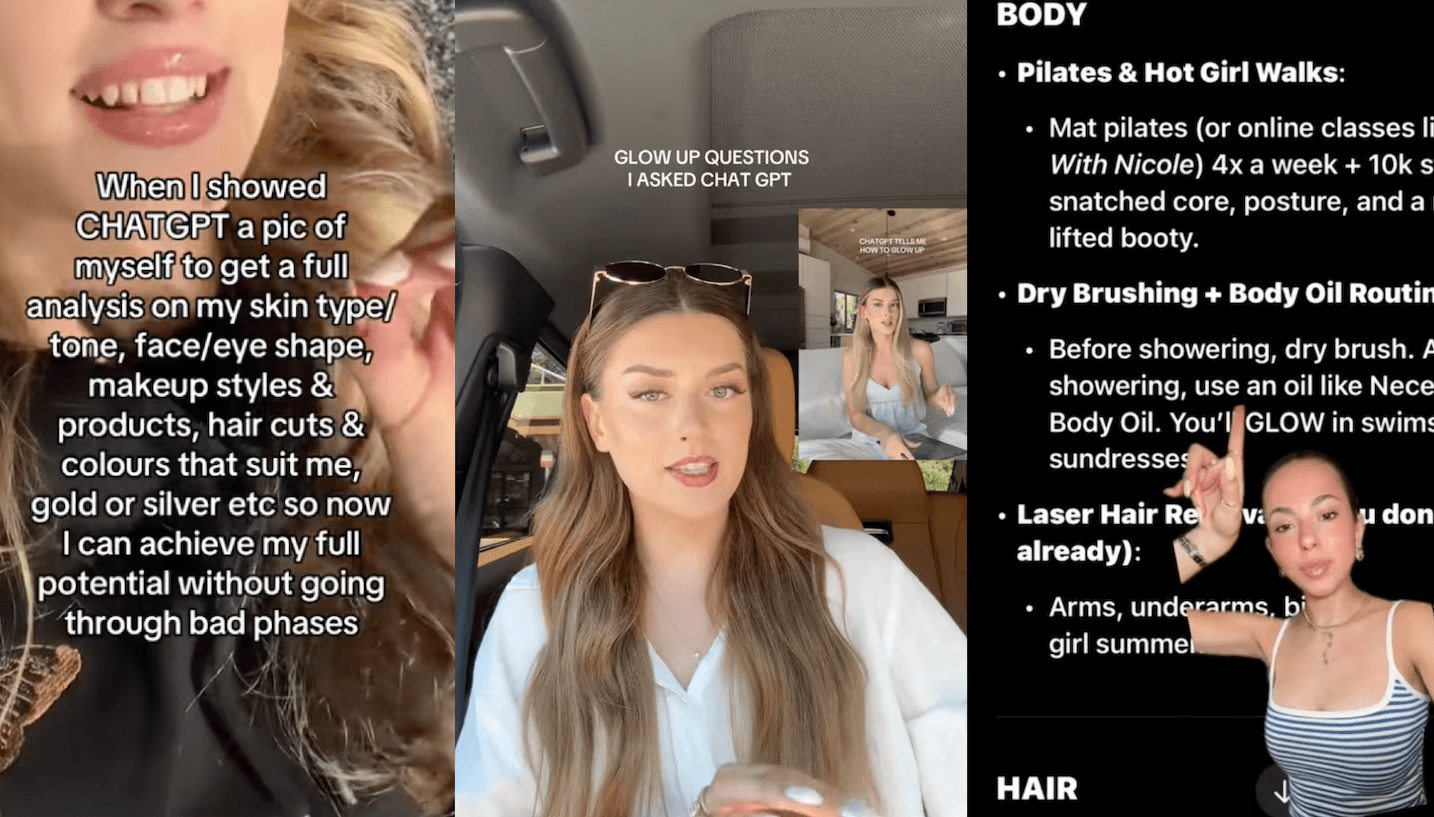
52% of Gen Z shoppers are turning to AI for skincare recommendations rather than Google or Amazon (Source)
How to optimize for GEO?
A GEO strategy plans and creates content around the known processes generative AI models use to provide information. These models may pull information from certain trusted sources and prefer clear, well-structured content. Optimizing for LLMs is a playbook in itself, with SEO as the essential foundation. So, you want to first understand if generative AI search is now commonly used in your industry and decide to prioritize GEO accordingly.
Assess industry and customer adoption of GEO
Use customer conversations and surveys to know how often your customers use AI search for information and recommendations. If they’re increasingly using LLMs, act soon, else keep monitoring and optimize when the shift happens.
AI search may be more commonplace in industries like travel and hospitality, fintech, health technology, education, legal, staffing, and cybersecurity. If you're in an industry with a high LLM search usage, prioritize GEO.
Check your brand’s visibility in LLMs
Write 15-30 prompts your audience might use when searching for your type of product or service. Use them across AI search engines like Perplexity, Claude, ChatGPT, Copilot, and Gemini, and check if you show up and how.
Are you recommended or mentioned in passing, and in what tone: factual or positive? Check for competitor mentions and note which sources are cited. This method to find out your current AI visibility is simple but lengthy.
When you begin monitoring mentions actively, tools like Profound, Otterly AI, and Semrush will be convenient, showing AI citations, surfacing user questions, identifying frequently visited pages, and offering other insights.
Use semantic “chunking”
Instead of scanning entire web pages, AI systems break content into smaller segments, convert them to vectors, and retrieve those most semantically similar to user queries. Semantic chunking builds on this AI behavior, creating content designed to increase semantic matches and improve visibility in AI search results.
Tips for GEO chunking
Avoid mixing multiple ideas in one section; cover one idea or concept in each content chunk
Organize information clearly through or within:
- Tables
- Ordered lists
- FAQ sections
- Q&A formatting
Pro Tip: Repackage old content into GEO-optimized Q&A style pieces, listicles, and data-rich formats like tables, checklists, cost calculators, benchmark data, glossaries, etc.
Use phrases customers search for
AI search queries tend to be longer as people ask complete questions and have follow-up conversations. So, GEO prioritizes long-tail queries, including them in titles, H2s, H3, and FAQ sections. Find user prompts and keyword volumes from your AI search monitoring tool and integrate them in your content.
Refresh outdated content
To avoid giving users dated or inaccurate information, AI systems tend to favor recently published content. A study of publish dates of 5000+ URLs across ChatGPT, Perplexity, and AI Overviews found that 90% of AI bot hits were for content from the last three years. Regularly updating existing content with current statistics, new product features, and additional helpful sections like FAQs is a good GEO practice.
Use clear, descriptive URL slugs
AI bots scan URL slugs to understand page content and relevance to user query. The most effective slugs are clear, to the point, and aligned with what users are searching for.
Make your website AI-ready
Besides what’s visible on the page, pay attention to what’s behind it, like the HTML structure, metadata, and schema markup. Here are some ways to make your site as accessible as possible for AI to cite:
Add structured data mark-up for authors, company, FAQs, products, and guides, and key metadata like published dates.
Use “View Source” to confirm that your key content loads in the raw page source
Keep your XML sitemap updated to help AI find your latest content
Check if pages load quickly or use simple code and less JavaScript to increase speed
Help AI “see” videos and images by adding text descriptions and using structured mark-up to highlight key details like specifications and company information
Focus on unique, credible information (owned content quality)
AI systems value authority and trust signals, frequently citing from authoritative domains, forums, review sites, and social media sites. Author bylines and external citations to authoritative sources can help you get discovered in AI searches.
They also lean towards content that offers users something different from what’s already available online. So, machine-generated content and fluffy pieces won’t cut it. But your proprietary data will make you look good.
Even a single comprehensive blog post featuring unique insights from customer surveys, expert roundtables, or original research can enhance your perceived quality and trustworthiness.
Build buzz with strategic PR (earned content and reputation)
LLMs also judge a brand‘s reputation by how consistently and positively it’s portrayed in influential media sites. Per a study, editorial media remains the most influential source for AI responses across brand traits of quality, trust, innovation, and value. An established PR strategy can contribute to GEO, and leadership can play a key role in shaping digital buzz.
Here are some ideas:
Partner with industry influencers to conduct original research and boost reach through their networks
Thought leadership content holds sway over decision-makers:
- Have leadership publish expert content on LinkedIn and contribute to authoritative media sites and trade publications.
- Pitch your leaders for podcast appearances and media interviews.
Secure media mentions from recognized industry voices and media publications that users and AI trust
Create compelling insights, quotes, and unique data that journalists and bloggers want to cite
Aim for consistent coverage around core topics you want to feature in AI results
Tip: AI tools can take care of small but important tasks like calculating readability scores, surfacing PAA questions, and checking alignment with messaging guidelines. They can help with (and save time on) continuous optimization across all content created for owned and earned media.
SEO vs AEO vs GEO
Aspect | SEO | AEO | GEO |
Purpose | Improve website ranking on search results pages | Increase visibility in direct answer features | Get cited in generative AI responses |
Primary platforms | Google, Bing search engines | Featured Snippets, AI Overviews, PAA boxes, Voice assistants | ChatGPT, Perplexity, Copilot, Claude |
User behavior | Clicks through to websites | Gets answers directly from SERP | Asks AI conversational questions |
Key tactics | Keywords, backlinks, technical optimization | FAQ sections, question headings, concise answers, query fan-out | Semantic chunking, fresh data, expert content |
Success metric | Higher SERP rankings | Featured in answer boxes | Brand mentions or content citations in AI responses |
Timeline | Established practice | Specialized SEO strategy (2015+) | Emerging practice (2023+) |
Smart marketing with AI
In the busyness of enterprise marketing, a lot of time gets eaten up by routine stuff like updating metadata, repurposing a successful piece of content, or turning customer interviews into enticing blogs. AI can safely take care of tasks that don't really need unique human creativity and insight, letting you get more done and keeping you from stretching your teams thin.
Typeface's Web Agent and custom agents (which you can tailor to your specific needs) are built to handle these kinds of workflows with human oversight to ensure quality and brand alignment. They help keep your content fresh, generate new content, and keep your online presence active, which naturally supports better visibility and traffic. Curious how this might work for your team? Check out Typeface with a demo or contact sales.
FAQ
1. How do I rank in AI answers?
To rank in AI search results, focus on the following content tactics:
Use structured data to help AI (and search engines) under the structure and context of your content
Write in natural, easy-to-understand language
Cite credible sources
Improve readability with short paragraphs, bullet points, tables, and clear subheadings.
Optimize for user experience, with fast loading pages, mobile-friendly design, and minimal intrusive elements (like pop-ups)
2. What is an example of AEO?
A few examples of how AEO works:
When you search for “How to boost B12 naturally”, Google’s AI Overview gives you a summarized answer, and includes small, focused sections on dietary sources for B12, tips to increase B12, and risk factors for B12 deficiency, with source links.
If you ask Google “What is a virtual assistant?”, the definition is displayed as a featured snippet with the page link.
For the above queries, People Also Ask boxes appear, such as, “How do I raise my B12 levels fast?”, “Is Alexa a virtual assistant?”, and “What exactly does a virtual assistant do?”
3. Is AEO the same as GEO?
While some marketers use AEO and GEO interchangeably, they're distinct.
AEO optimizes content for search features that provide direct answers or summaries such as featured snippets, AI overviews, and PAA boxes.
GEO focuses on content to be cited in AI-powered searches in ChatGPT, Perplexity, and Copilot.
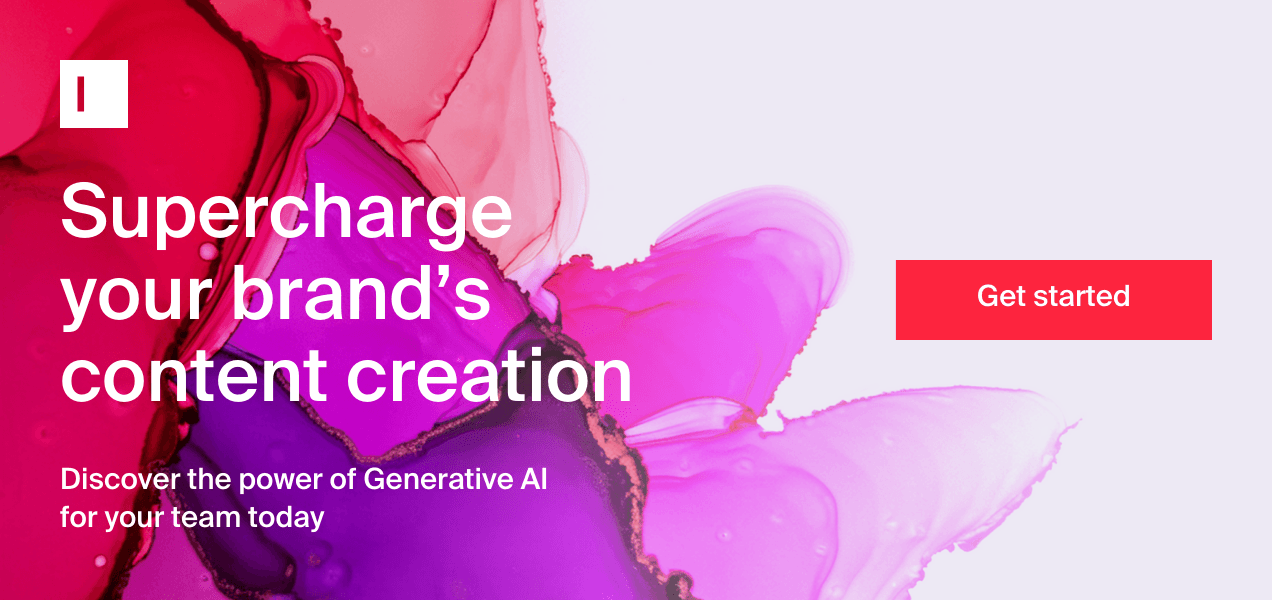
Share
Related articles

AI at Work
What Exactly Is Answer Engine Optimization (AEO) And Why Does It Matter?

Bryan Kitch · Senior Content Marketing Manager
September 10th, 2025 · 17 min read

AI at Work
How to Integrate AI SEO Tools Into Your Process: Automating SEO Suggestions

Ashwini Pai · Senior Copywriter
June 27th, 2025 · 8 min read

AI at Work
40+ AI SEO Prompts for Strategy Building and Content Creation

Akshita Sharma · Content Marketing Associate
February 7th, 2025 · 14 min read